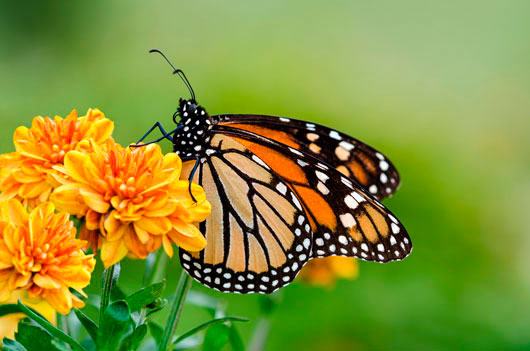
This year, if you are looking for a unique way to celebrate Earth Day, consider participating in a citizen science project. Scientists use volunteers across the country to make observations in their environment or community, then record them online to create a database. This information can help scientists track species populations and identify those that are on the decline or in trouble.
Older children can often complete these projects on their own after being shown how. Younger children may need the help of an adult, who might enjoy participating in the project just as much as the child. Take a look at these resources to help you find a project that interests your family or children.
Journey North is a free, Internet-based program that explores the interrelated aspects of seasonal change. On its website you’ll find a handful of projects dedicated to exploring how sunlight and the seasons affect living things on Earth. From tracking animal migrations like those of monarch butterflies and hummingbirds, to monitoring plant growth using tulips, your children will learn about the interconnectedness of life on the planet.
Read Related: For Earth Day & Arbor Day: Growing a Garden with Your Children
SciStarter is another citizen science website where you can browse through a large number of projects available for participation. You can find the project that best fits your family by selecting the type of activity or topic you’re interested in, or simply using keywords. Many global projects are listed here, so make sure you choose one for your area.

The Lost Ladybug Project tracks several species of native ladybugs (like the nine-spotted ladybug) that were once very common in the U.S. but have become extremely rare. This spring and summer you can help scientists by looking for ladybugs and taking pictures that you can then upload to the site. The scientists are most interested in the rare species, but any pictures will help. You can learn, have fun and help save these important species. Their website has tips for finding and photographing ladybugs, as well as a number of educational resources like lesson plans, identification tools, and basic biology information. What a great way to help your kids maintain science and reading skills throughout the summer!
Project Nest Watch is run by the Cornell Laboratory of Ornithology, and is a nationwide monitoring program designed to track the status and trends in the reproductive biology of birds, including when nesting occurs, number of eggs laid, how many eggs hatch, and how many hatchlings survive. Participation is free, and it is easy for anyone to do. Children, however, should be accompanied by an adult when checking bird nest sites. Simply follow the directions on the website to become a certified NestWatcher (it’s free and easy), then go outside and find a bird nest using their helpful tips. Visit the nest every three to four days and record what you see, then report this information on the website.
Firefly Watch is aimed at saving diminishing numbers of lightening bugs, which are disappearing from the American landscape. Help the Museum of Science in Boston and other researchers track the population of these insects by watching fireflies in your own backyard and sharing your observations online. The website has lots of fun facts about them, and information for identifying different species and even males from females. While you’re at the site, take a moment to read about the environmental factors affecting these popular little insects.











